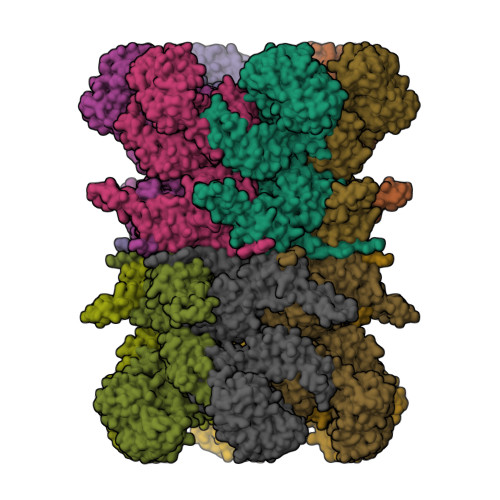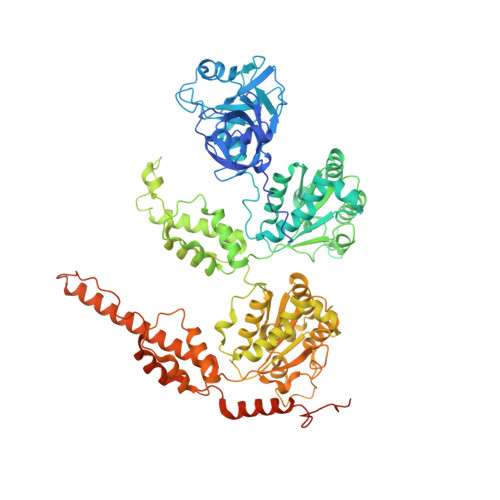Cryo-EM structures of human p97 double hexamer capture potentiated ATPase-competent state.
Gao, H., Li, F., Ji, Z., Shi, Z., Li, Y., Yu, H.(2022) Cell Discov 8: 19-19
- PubMed: 35190543
- DOI: https://doi.org/10.1038/s41421-022-00379-1
- Primary Citation of Related Structures:
7VCS, 7VCT, 7VCU, 7VCV, 7VCX - PubMed Abstract:
The conserved ATPase p97 (Cdc48 in yeast) and adaptors mediate diverse cellular processes through unfolding polyubiquitinated proteins and extracting them from macromolecular assemblies and membranes for disaggregation and degradation. The tandem ATPase domains (D1 and D2) of the p97/Cdc48 hexamer form stacked rings. p97/Cdc48 can unfold substrates by threading them through the central pore. The pore loops critical for substrate unfolding are, however, not well-ordered in substrate-free p97/Cdc48 conformations. How p97/Cdc48 organizes its pore loops for substrate engagement is unclear. Here we show that p97/Cdc48 can form double hexamers (DH) connected through the D2 ring. Cryo-EM structures of p97 DH reveal an ATPase-competent conformation with ordered pore loops. The C-terminal extension (CTE) links neighboring D2s in each hexamer and expands the central pore of the D2 ring. Mutations of Cdc48 CTE abolish substrate unfolding. We propose that the p97/Cdc48 DH captures a potentiated state poised for substrate engagement.
Organizational Affiliation:
School of Life Sciences, Westlake University, Hangzhou, Zhejiang, China. gaohaishan@westlake.edu.cn.


















